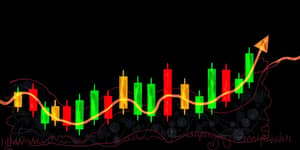
In today’s dynamic financial landscape, collective investor sentiment shapes market trends more than any single economic report. From Wall Street to retail platforms, the prevailing mood among traders dictates supply and demand dynamics, often steering prices far from intrinsic values. As fear or optimism sweeps through trading floors and online communities, asset valuations rise or plunge in dramatic fashion. Understanding how these psychological forces drive price movements empowers investors to anticipate turning points, manage risk, and capitalize on emerging opportunities across all market environments.
Market sentiment, also known as investor attention, reflects the aggregate feelings of participants about future price movements. When bullish sentiment dominates, buying pressure builds, pushing prices upward. Conversely, bearish sentiment triggers selling, dragging prices downward. This invisible tide acts as a powerful force, capable of overriding traditional valuation metrics and fundamental analysis. The adage “all boats float or sink with the tide” captures how individual stocks often rise and fall in unison with broader market psychology.
Key terms include bullish, indicating widespread optimism, and bearish, signifying pervasive pessimism. “Permabulls” and “permabears” maintain constant outlooks, often ignoring shifting economic realities. Market sentiment is frequently used as a contrarian indicator: extreme optimism can signal upcoming corrections, while widespread fear may foreshadow recovery. By tracking sentiment extremes, analysts seek to identify potential inflection points, enhancing timing for strategic entries and exits in their portfolios.
A range of factors shapes investor moods at any given moment. Macroeconomic data such as GDP growth and inflation readings inform confidence in economic health. Corporate earnings reports and mergers can sway sentiment toward specific stocks. Geopolitical events, natural disasters, and policy shifts inject uncertainty or assurance. Media narratives and social platforms amplify emotions through constant commentary. Technical factors like trend patterns and trading volumes further influence perception. A combination of these elements drives the collective market psyche behind price movements.
Behavioral finance, grounded in Kahneman and Tversky’s work, explains why emotional biases pervade investment decisions. Overconfidence leads traders to overestimate their forecasting abilities, while anchoring causes undue reliance on specific reference points. cognitive distortions create momentum or panic, often fueling price swings that have little connection to underlying value. Recognizing such biases is crucial for developing self-awareness and disciplined investing practices.
Prospect Theory describes how the pain of losses typically outweighs the pleasure of gains, prompting reactive, short-term behavior. Herd behavior further exacerbates this effect as individuals follow crowd actions to avoid regret. In extreme cases, such collective moves manifest as meme stock frenzies, where online communities drive dramatic price surges or collapses. Reflecting emotional underpinnings of market sentiment equips investors to resist impulsive moves and adopt strategies aligned with long-term goals.
Quantifying market sentiment requires blending traditional metrics with modern analytics. Traders monitor advancing versus declining stocks, new highs versus new lows, and put/call ratios, all of which signal prevailing mood. Survey-based indices, like the Baker-Wurgler and AAII Investor Sentiment Survey, capture self-reported optimism levels. Meanwhile, AI-driven tools analyze news articles, social media posts, and forum discussions, assigning real-time sentiment scores. These combined approaches offer actionable insights for tactical decision-making.
Real-world events often illustrate the raw power of investor sentiment. The GameStop short squeeze in early 2021 saw retail traders unite online to trigger massive price spikes, reflecting collective exuberance overriding fundamentals. Conversely, the 2008 financial crisis exemplified panic selling, as fear of contagion led to rapid market collapses. Cryptocurrency markets exhibit similar dynamics: social media-driven hype around Bitcoin and altcoins can create euphoric rallies or sudden crashes, depending solely on mood shifts.
These instances underscore how sentiment can move assets of all types, often at breakneck speed.
Savvy investors integrate sentiment analysis with technical and fundamental frameworks. Contrarian strategies seek to buy during extreme pessimism and sell excess optimism, aiming to capture mean reversion. Momentum traders, conversely, ride bullish trends until sentiment signals peak euphoria. Hedging techniques, such as options protection, help mitigate downside risk. Diversifying across asset classes and geographies further cushions portfolios against abrupt emotion-driven swings, ensuring that no single sentiment shift upends an entire investment plan.
Despite its importance, sentiment analysis faces obstacles. Data quality issues and artificial manipulation can distort indices, while emotional metrics may lag sudden market shifts. Timing contrarian trades based solely on sentiment extremes can prove perilous without corroborating data. Without balancing sentiment data with fundamentals, harsh losses can occur unexpectedly, underscoring the need for robust risk management.
Market sentiment wields profound influence over price movements, shaping bull runs and bear declines across global markets. Understanding the emotional drivers behind buy and sell decisions—from behavioral biases to social media fervor—enables investors to anticipate trends and guard against impulsive mistakes. By combining sentiment indicators with technical analysis and fundamental valuations, market participants can craft balanced strategies that respond effectively to shifting moods. Ultimately, mastering the psychology of market sentiment fosters resilience, discipline, and the capacity to navigate uncertainty with confidence.
References













